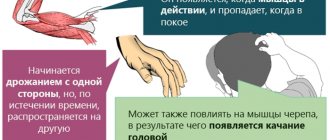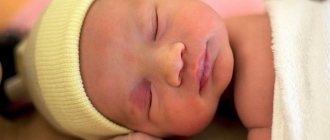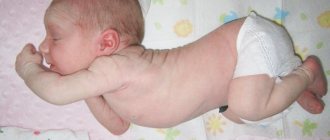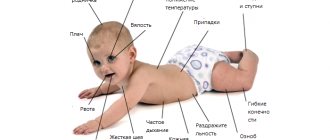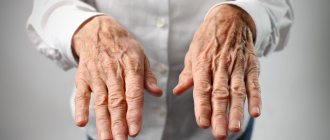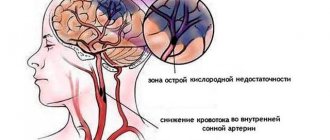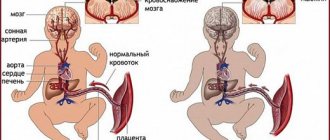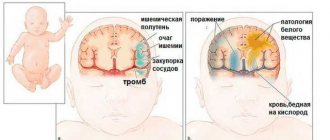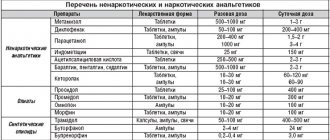Young parents are very sensitive to the health of their tiny child: they are frightened by all the unusual manifestations in his condition. Therefore, when they detect tremors in the baby’s limbs or chin, they begin to sound the alarm.
Is it correct? What is tremor? Is it a symptom of serious abnormalities in a newborn? We will discuss all these questions in today's article.
When does twitching occur?
Typically, chin tremor in a newborn, as well as trembling of arms and legs, are noticeable when crying or after physical activity (after bathing, when feeding, while yawning, etc.). From time to time, such phenomena can occur during the baby’s REM sleep. As a rule, this condition lasts a few seconds and goes away on its own.
If trembling occurs at a time when the child is calm, then this may be a signal of muscle hypertonicity and requires contacting a pediatrician. A specialist will tell you what to do to relax your baby’s muscles. As a rule, this means swimming in the pool, regular therapeutic relaxing massages and soothing baths. By the way, they are carried out no more than three times a week, adding decoctions of mint, lemon balm, valerian and motherwort to the water.
Tremor in children: main causes
As mentioned above, the culprit may be the immaturity of the nervous system. But other factors, such as premature birth and fetal hypoxia, can also lead to trembling.
The child's immature nervous system
After birth, children do not yet have developed coordination of movements, and their nervous system has not reached the required stage of maturity. This is what most often causes chin tremor in infants, as well as trembling of the limbs. A violent outburst of emotions, which increases the level of norepinephrine in the body, also contributes to the appearance of trembling of the baby’s arms and legs. Increases the chances of developing this phenomenon and muscle hypertonicity.
Fetal hypoxia
Fetal hypoxia, which can develop both in utero and at the time of birth, has become a fairly common problem. Lack of oxygen, especially long-term, negatively affects brain function. A number of factors contribute to the development of hypoxia:
- Disorders of the functional activity of the placenta.
- An infection that developed in utero.
- Increased tone of the uterus when the mother is threatened with miscarriage.
- Bleeding during pregnancy.
- Polyhydramnios.
All these factors limit the supply of oxygen to all cells of the body, including the brain, which also affects the development of the nervous system. In addition, oxygen starvation can be caused by the characteristics of labor (rapid labor and weak contractions), entanglement of the fetus in the umbilical cord, and placental abruption.
Premature birth
Chin tremor in newborns born prematurely also occurs due to the immaturity of the nervous system, since the baby was deprived of continued intrauterine development. Therefore, the central nervous system of a premature baby continues to form outside of the baby’s presence in the womb, and these can hardly be called optimal conditions for this process. No matter how attentively and carefully the mother treats the baby, she is not able to provide him with the atmosphere that was in her stomach. Therefore, we can safely say that limb tremors in children in any case depend on the maturity of the nervous system.
How does twitching occur?
Tremor in a newborn occurs due to the immaturity of those nerve centers that are responsible for controlling movement in the baby’s brain, as well as due to excess norepinephrine in his blood, which occurs when crying, fright or hunger. And this excess, in turn, is also provoked by the immaturity of the adrenal glands that produce this hormone.
This condition is especially common in premature babies, since the development of their initially immature nervous system outside the mother’s womb is much more difficult than in babies born at term.
Causes of hand tremors in infants
In the first days after birth, parents may notice muscle cramps in the baby. Some parts of the face, lower and upper limbs may tremble. One can speak of a serious pathology in the presence of head tremor.
Tremor of the limbs occurs due to disruption of the endocrine or nervous system.
Tremor can occur due to underdevelopment of nerve endings that are located in the brain and affect motor activity. Muscle cramps may occur due to high concentrations of norepinephrine in the blood. As a result, the baby may experience strong emotions that lead to tremors.
Causes of hand tremors:
- Release of large amounts of norepinephrine;
- Crying too long;
- Neurological abnormalities;
- Nervous system injury;
- Oxygen starvation;
- Weak labor;
- Entwining the fetus with the umbilical cord;
- Drug withdrawal syndrome;
- Hemorrhage.
It is impossible to find out the reason on your own. If hand trembling does not go away within a month, parents should be wary and consult a neurologist. Treatment of limb tremor is carried out under the supervision of a specialist. Parents should also systematically give their child a relaxing massage.
At what age does the appearance of tremor become a sign of illness?
In the development of a baby in the first year of life, these are the so-called critical periods of the formation of the nervous system. At this time, it is most vulnerable to disruptions in its functioning. These periods include the first and third, as well as the ninth and twelfth months of the baby’s life.
By the way, it is at this time that you should visit a pediatric neurologist. If tremors of the limbs or chin are observed longer than the specified age, then this can act as a sign of damage to the nervous system both during pregnancy and childbirth.
What reasons can provoke tremor?
Since the baby’s nervous system begins to form in the mother’s womb, its condition greatly depends on how the pregnancy was carried. Serious problems in a newborn can be caused, for example, by oxygen starvation caused by a number of reasons: disturbances in the placental blood flow, hemorrhages or violations of the integrity of the amniotic membrane. The presence of infections, bronchial asthma or anemia in the expectant mother also provokes tremors in the newborn.
Injury to the child’s nervous system can also occur during a protracted or rapid labor, as well as in the event of various complications in the labor process (for example, entanglement of the umbilical cord, placental abruption, or uterine rupture).
By the way, even slight excitement of a pregnant woman, especially in the last weeks, can affect the fetus. Indeed, when there is anxiety or stress, the content of norepinephrine in the mother’s blood increases, and it leads to destabilization of the child’s nervous system.
Causes
Provoking factors for tremor in infants are divided into physiological (normal) and pathological (painful, unhealthy). If a child’s chin, arms, legs, and head shake from birth to 3–4 months, this is normal; the symptoms do not require treatment.
Over time, the nervous system will learn to control movements, control emotions, and the tremor will pass. The persistence of twitching in a later period and tremors at rest signal pathological causes that require diagnosis.
Physiological
The baby's chin sometimes shakes when he cries, if he heard a sharp sound, feels hungry, touched hot or too cold water, or the parents made a sudden movement. The reasons for this reaction of the facial muscles to stimuli are:
- Instability of the newborn's central nervous system. The baby cannot control emotions. Trembling of the chin or lower lip occurs due to stress or as a preparation for crying; from harsh light or sound, the baby may still blink frequently and shake his lips. This symptom is also typical for adults who have experienced shock, great joy or grief.
- Immaturity of the endocrine system.
Any emotional overexcitation provokes the release of hormones into the blood. Norepinephrine causes muscle tremors. By the age of one year, the functioning of the adrenal glands is normalized. - Prematurity. Tremors are more common in children born prematurely. If development proceeds at a normal pace, the trembling will stop by 6–12 months.
- Muscle trembling from tension, sucking. When a baby yawns heavily or sucks on a breast or bottle for a long time, the facial muscles tense and a short tremor may occur. This does not mean that the child is sick.
On a note! Cramps of the lips and chin are common in absolutely healthy children after sleep. An infant may awaken abruptly from noise or colic, or be frightened by something during sleep. This is a normal phenomenon; if the tremor goes away after 20–30 seconds, the condition is not regular.
How often does your child's chin shake during the day?
- 2-3 times a day 40%, 138 votes
138 votes 40%138 votes - 40% of all votes
- 3-4 times a day 30%, 106 votes
106 votes 30%
106 votes - 30% of all votes
- Very often 19%, 66 votes
66 votes 19%
66 votes - 19% of all votes
- Once a day 11%, 39 votes
39 votes 11%
39 votes - 11% of all votes
Total votes: 349
26.12.2018
×
You or from your IP have already voted.
Pathological
With pathological tremor in newborns, the chin, head and limbs tremble. The totality of symptoms, their intensity, duration, twitching for no apparent reason is a serious reason to consult a neurologist at any age. Pathological causes of tremor include:
- intrauterine infections;
- threats of miscarriage during pregnancy;
- sepsis;
- placental abruption;
- prolonged labor;
- intoxication in the womb;
- fetal hypoxia;
- birth injuries;
- intracranial hemorrhage due to trauma;
- vitamin deficiency, lack of calcium, glucose, magnesium;
- withdrawal syndrome in a pregnant woman after withdrawal from alcohol and drugs;
- blood poisoning;
- muscle hypertonicity.
The disease develops in a baby immediately after birth or in the womb. You cannot cure tremor on your own; seek medical help.
On a note! It is interesting that the chin and limbs of 2-3 month old children can shake not only from negative emotions, but also from joy, delight and interest.
How dangerous is tremor in newborns?
Komarovsky, in his books about children in the first year of life, advises mothers not to panic as soon as they notice that the crying toddler’s lips or chin are trembling. If these manifestations are not pronounced and are not repeated too often, then by the age of three months they will pass without a trace.
If trembling occurs even in a calm baby, if the baby’s head also twitches, and over time these symptoms only intensify, then the child needs consultation with a specialist. Such tremor in a newborn can be a manifestation of many neurological disorders (increased intracranial pressure, hyperglycemia (high blood sugar), perinatal encephalopathy, hypocalcemia (low calcium in the blood serum), etc.).
Tremor in a baby: causes and solution to the problem
Tremor in newborn babies is manifested mainly by twitching of the chin and upper limbs. It can be considered a similar manifestation of muscle hypertonicity, which is the main sign of an immature nervous system of a baby.
Tremor in infants manifests itself mainly due to overexcitability of the nervous system when the baby screams, cries, and also when he wants to eat, or someone frightens him. Parents may also notice that their child's eyeballs move during sleep.
This usually occurs during a phase of sleep called REM sleep.
Tremor in newborns is not a rare phenomenon; it occurs in almost 50% of all children born. From the first day of life until 4 months, signs of tremor are considered normal, but if they do not disappear after this period, then you need to take a closer look at the baby.
It may be worth consulting a doctor at this point. But if the hands and chin have not stopped shaking even after a year, then this is a clear signal about problems with the child’s health.
To understand when tremor is a benign specific condition of the nervous system, and when it is a serious problem, we suggest that you read this article.
The children's nervous system lends itself well to “regulation”. Therefore, the sooner you notice the problem and receive qualified help, the greater the chances of normalizing the state of the central nervous system and restoring it.
What is most affected by involuntary shaking in children?
If you look at the statistics, you can make an unambiguous conclusion - often almost all babies have head tremors. This is what indicates the incomplete maturity of the baby’s nervous system. When a baby's arms or legs, as well as lips and chin, shake, this is already a consequence of prematurity.
Parents should also understand that such phenomena do not occur in every child. Therefore, you should not immediately panic while waiting for your baby.
Tremor in children: main causes
As mentioned above, the culprit may be the immaturity of the nervous system. But other factors, such as premature birth and fetal hypoxia, can also lead to trembling.
The child's immature nervous system
After birth, children do not yet have developed coordination of movements, and their nervous system has not reached the required stage of maturity.
This is what most often causes chin tremor in infants, as well as trembling of the limbs.
A violent outburst of emotions, which increases the level of norepinephrine in the body, also contributes to the appearance of trembling of the baby’s arms and legs. Increases the chances of developing this phenomenon and muscle hypertonicity.
Targeted treatment and its necessity
Based on the data available to doctors, we can say that the concern is caused by tremor that persists for 4 months. In this case, the shaking spreads to the baby’s legs and head, and the mother knows for sure that the baby is not shaking at certain moments (hunger, fear, etc.). Parents should understand that such a phenomenon may be a warning sign of the following problems:
- Hypomagnesemia.
- Increased blood sugar levels.
- Intracranial hemorrhage.
- Drug withdrawal or withdrawal syndrome.
- Hypoxia-ischemia of the brain.
- Increased intracranial pressure.
- Low calcium levels in the blood.
- Sepsis.
In these cases, the doctor will definitely prescribe you a full examination and appropriate treatment.
What is the treatment
If a child’s arms, legs or head are shaking, then treatment should be aimed not only at restoring the state of the nervous system, but also at health in general.
That is why the mother must strictly follow the neurologist’s instructions and adhere to all recommendations. The most commonly prescribed medications are Glycine, Asparkam, etc.
But only a pediatric neurologist can identify the exact cause of trembling limbs and prescribe medications. Therefore, self-medication is dangerous.
But the procedures that are necessarily prescribed for children suffering from tremors are simply necessary. First of all, this is massage, gymnastics and swimming.
Massage treatments for tremors
At home, giving a baby a massage is quite simple, and any mother can handle it. The main thing is to combine massage with constant conversations with the baby. The main movements of massage include kneading, stroking, rubbing and vibration. Usually the doctor himself gives an example of how you should do a massage. But you can also watch a special video below.
In the meantime, I would like to say that during the session your baby should feel as comfortable as possible, because all your actions are aimed specifically at strengthening the child’s nervous system. Therefore, it is worth remembering some rules:
- Ventilate the room well.
- Before the massage, be sure to remove your rings and bracelets so as not to scratch your baby. It is also a good idea to cut your nails.
- Rub your palms together and knead your hands.
- Massage should be done only when the child is active and in a good mood.
- If during the process the child’s mood worsens, then stop the session. The baby should calm down and become cheerful again.
- Do not bring your baby to the clinic for a massage. It’s better to hire a massage therapist and introduce him to the child so that he can get used to a stranger. Ideally, it is better to do the massage yourself in an atmosphere familiar to the baby.
- Nothing should irritate the child. It is better to eliminate loud music, bright lights and other external factors before the massage session.
- Be sociable and affectionate with your child. Songs, rhymes and funny jokes are the best accompaniments to any procedure.
- Do a massage half an hour before water treatments. This way you can provide your baby with even more “relaxation”.
Swimming and gymnastics
If you have not yet decided to send your baby to infant swimming, then you can carry out water procedures at home. If a child has tremors of the limbs, then it will be extremely useful for him to swim, even while in your arms. Let the baby have plenty of play with his hands and feet, and let the water in the bathroom be at the most comfortable temperature.
Gymnastics for a baby is also useful. There are a number of exercises that you can also do with your baby at home.
- Grab your baby's foot with one hand and tap the outside of his leg with the other. This exercise is called the “hammer” and is repeated on both legs alternately.
- Stroke your baby's arms and legs. Take the baby by the hand and, shaking it slightly, lower yourself from the shoulder to the wrist. This exercise should be performed on the legs and arms alternately.
- Stretch your baby's buttocks. To do this, place the baby on his tummy and just lightly tap his butt with your little fists.
Remember that tremors are a completely natural phenomenon and should not cause you to panic. But you must monitor your baby daily. Children under one year old continue to develop, so you need to not miss the moment when you, together with a specialist, can make any adjustments.
Doctors note several critical periods in a baby’s life. These are 1, 3, 9 and 12 months. It is at this time that the nerve endings become very sensitive, and any deviation can cause pathologies. Therefore, the future health of your baby depends on your attention and participation.
Source: https://PomoshRoditelyam.ru/detskoe-zdorove/tremor-u-novorozhdennih-drozhanie-konechnostej-i-bodborodka-soveti-komarovskogo.html
Signs of tremors in newborns, or when to worry?
Almost every newborn, including full-term ones, experiences tremor of the extremities, which manifests itself as slight trembling of the lips, arms and legs. Such indicators are considered normal and do not indicate pathology in the development of the nervous system. So what is considered a problem?
Important! You can ignore the physiological tremor of newborns, since after two to three months this phenomenon goes away without treatment.
The pathological form of tremor consists of trembling not only of the limbs, but also of the head. At this stage of the disease, symptoms appear more frequently and without apparent cause of anxiety or stress. This phenomenon should alert parents; it is necessary to urgently show the child to a neurologist. Increased tremor in infants may also indicate the development of hydrocephalus or intracranial pressure.
Why does limb tremors occur in newborns?
Tremor is a compensatory response of immature nerve endings that leads to muscle cramps. Tremor is divided into physiological and pathological. The first type of tremor is characterized by small amplitude and rhythm. Most often it causes trembling of the child's lower lip and chin.
With physiological tremor, trembling may be asymmetrical or symmetrical.
This type of tremor goes away quite quickly. Most often it is caused by excessive nervous tension in the baby, for example, after bathing, prolonged crying or during intestinal colic. Symptoms of tremor are most common in premature babies.
Causes of pathological tremor:
- Immature nerve centers of the brain;
- Improper functioning of the endocrine system;
- High norepinephrine content.
Pathological tremor can occur due to hypoxia, stressful situations, threat of miscarriage, rapid labor, umbilical cord entanglement, placental abruption, and birth injuries. Dr. Komarovsky believes that physiological tremor should not cause concern for parents. But continuing symptoms in children over the age of one year should alert you and be a reason to visit a neurologist.
How to treat increased tremor in a newborn: Komarovsky’s advice
Children say! My son (3 years old) and I are walking from kindergarten and I ask: “What did you eat for lunch?” - Soup. - And for the second? - Fish. - With potato? The son stopped, looked at me very surprised and with incomprehension and answered: “No with bones...
Often, tremor in babies in the first days of life occurs as concomitant diseases, such as sepsis, hemorrhage in internal organs, and cerebral ischemia. Therefore, before treatment, a thorough diagnosis and identification of the causes of what happened is necessary. In addition, pediatrician E. Komarovsky claims that the disease can occur for several months after birth in every second child due to the individual structure of the nervous system. To treat this diagnosis, swimming exercises, strengthening and relaxing massage are prescribed.
In the video by E. Komarovsky you will learn in more detail about the problems of the child’s nervous system.
How to massage for limb tremors in infants? Special technique
A newborn with identified tremor is prescribed therapeutic massage after six to eight weeks of life. The massage technique includes the following subtleties:
- Prepare the room for the procedure: ventilate it well and make sure it is warm.
- Place a thin mattress on a hard surface and cover it with a light diaper.
- You need to master a few simple movements: stroking, vibration, warming, rubbing.
- Movements throughout the body are performed strictly in the direction of the lymph flow to the lymph nodes.
- Stroking the legs is performed in the direction from the feet to the baby’s genitals.
- When warming up and stroking the hands, you need to move from the palms to the armpits.
- Rubbing is very beneficial for a child under one year of age. Therefore, use the pads of your fingers to perform spiral movements, massaging the baby’s limbs, back and tummy. These procedures have a beneficial effect on blood circulation in all organs.
Attention! When performing a back and chest massage, do not touch the area of the spinal column and liver, as you can harm the delicate organs.
